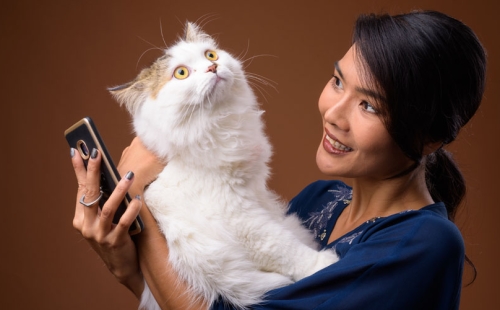Veterinary Client Communication Styles: Overcoming Differences

Communication is an essential tool in veterinary medicine. However, veterinary client communication styles can vary significantly between generations and individuals, so veterinary professionals should recognize personality differences and adjust their approaches to appropriately impact clients. Here are some insights into veterinary client communication preferences based on generational and personality differences and how to appeal to each type.
Veterinary client communication styles by generation
Generational assumptions about preferences have obvious limitations, but can be a good starting point. Each generation goes through distinct experiences that shape their worldview and expectations. The following are the most likely preferences based on generation:
1. Baby Boomers (born 1946-1964)
Baby boomers value face-to-face veterinary communication, opportunities to ask questions, and detailed discussions. Provide verbal explanations for this generation, but follow up with printed materials or written instructions.
2. Generation X (born 1965-1980)
Gen Xers appreciate efficiency, action, brevity, and clarity, and prefer digital resources over phone calls. Gen Xers are busy, so provide them with concise information, digital resources, and flexible options like telehealth or phone consultations.
3. Millennials (born 1981-1996)
Millennials are digital natives who prefer text, email, and apps over phone use and expect to manage their pet’s healthcare conveniently with digital tools. Engaging videos or infographics can pique Millennial interest and encourage them to research pet health conditions.
4. Generation Z (born 1997-2012)
Gen Zers value rapid and widespread access to information and prefer social media and mobile apps as veterinary communication tools. Leverage social media to offer education and recommendations on platforms they frequent, or try integrating chat and instant messaging features on client-facing hospital technology.
Veterinary client communication style by preference
Generational differences can shape a client’s value system, but don’t determine personality—each person from the same generation may have wildly different ideas about pet care. Veterinary professionals must consider how clients engage with and manage their pet’s health.
Classifying clients based on this engagement can help you tailor your communication approach. The groups include:
- Health-literate clients — These clients do the research, ask detailed questions, and expect detailed answers. Providing in-depth explanations and resources while encouraging questions will build trust and support their proactive approach.
- Directive clients — Directive clients are results-oriented and want clear, concise instructions. They prefer to be told what to do, so offer them clear recommendations and follow up with written summaries to hammer home your points.
- Collaborative clients — Collaborative clients fall between the other two types, and approach pet care as a partnership. These clients want to choose from multiple recommendations, but may apply their own research or knowledge to the care plan. Focus on finding a middle ground for the best results.
Helpful client communication strategies
Veterinary professionals can use basic communication skills and strategies to adjust to changing client preferences. Team members new to these ideas can benefit from continuing education courses or ongoing training in:
- Active listening — Pay attention to client concerns and questions and use verbal and non-verbal cues that indicate you’re listening intently.
- Personalization — Tailor veterinary communication methods to client preferences for calls, emails, texts, or other platforms.
- Storytelling — Sharing personal anecdotes about past cases can improve compliance and help clients feel more comfortable making decisions about their pet’s care.
Adapting veterinary communication styles to variable client needs can ensure your message gets through to the intended target and that clients feel they are receiving personalized care. Generational differences can be a good starting point, but teams should remember that each client is an individual.
Specialized training and CE can help veterinary professionals learn to recognize client differences and quickly pivot to steer conversations in the appropriate direction. Investment in veterinary client communications supports a client-centric approach, encourages collaboration, and improves patient outcomes.




